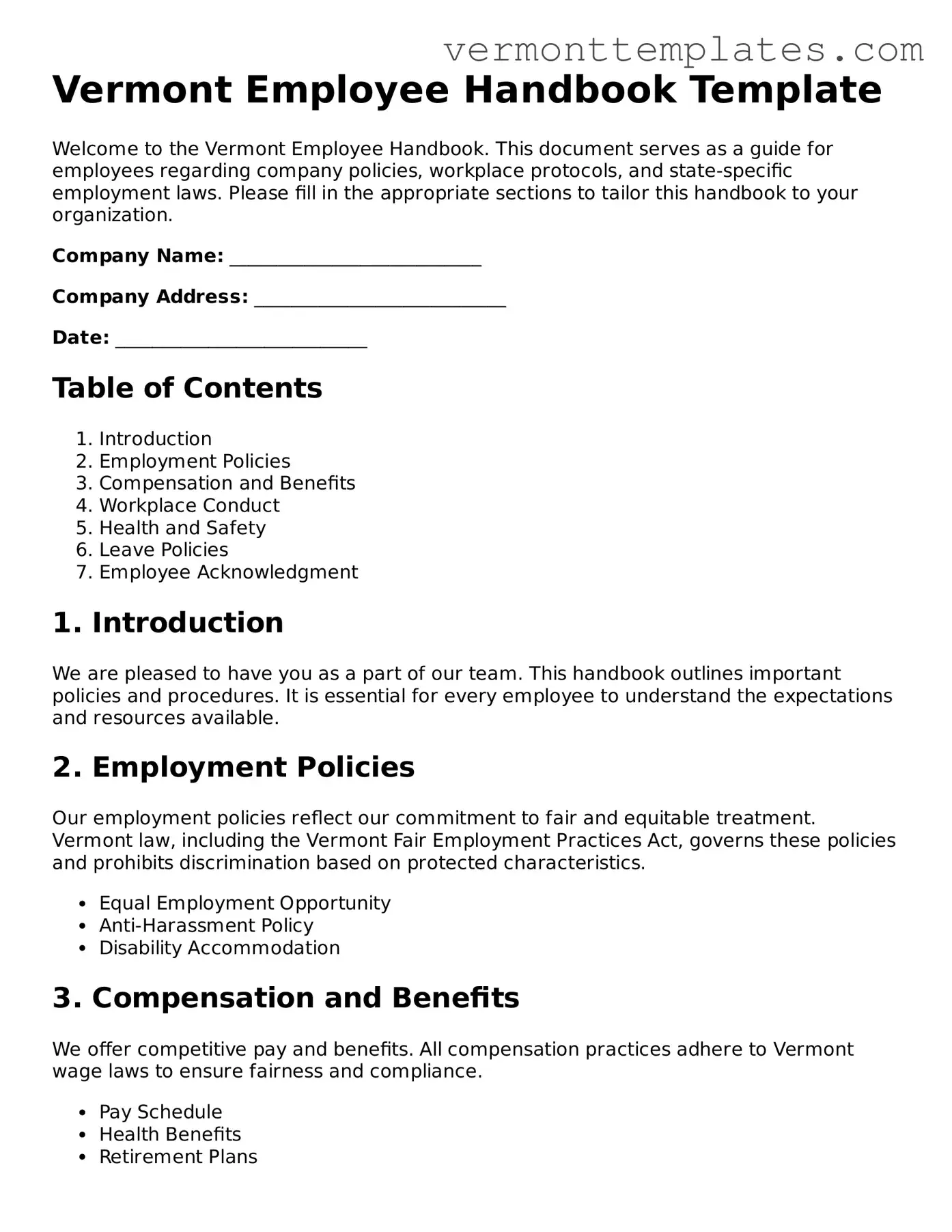Vermont Employee Handbook Template
Welcome to the Vermont Employee Handbook. This document serves as a guide for employees regarding company policies, workplace protocols, and state-specific employment laws. Please fill in the appropriate sections to tailor this handbook to your organization.
Company Name: ___________________________
Company Address: ___________________________
Date: ___________________________
Table of Contents
- Introduction
- Employment Policies
- Compensation and Benefits
- Workplace Conduct
- Health and Safety
- Leave Policies
- Employee Acknowledgment
1. Introduction
We are pleased to have you as a part of our team. This handbook outlines important policies and procedures. It is essential for every employee to understand the expectations and resources available.
2. Employment Policies
Our employment policies reflect our commitment to fair and equitable treatment. Vermont law, including the Vermont Fair Employment Practices Act, governs these policies and prohibits discrimination based on protected characteristics.
- Equal Employment Opportunity
- Anti-Harassment Policy
- Disability Accommodation
3. Compensation and Benefits
We offer competitive pay and benefits. All compensation practices adhere to Vermont wage laws to ensure fairness and compliance.
- Pay Schedule
- Health Benefits
- Retirement Plans
4. Workplace Conduct
Maintaining a professional environment is vital. All employees are expected to exhibit respectful behavior and uphold our company values in their daily actions.
- Code of Conduct
- Attendance Policy
- Dress Code
5. Health and Safety
Your safety is our priority. We comply with the Occupational Safety and Health Administration (OSHA) regulations to provide a safe and healthy work environment.
- Emergency Procedures
- Reporting Accidents
- Workplace Safety Training
6. Leave Policies
Employees are entitled to various types of leave under state law. These policies comply with Vermont’s Family and Medical Leave Act.
- Sick Leave
- Vacation Leave
- Family Leave
7. Employee Acknowledgment
By signing this page, you acknowledge that you have read and understood this handbook. Your signature indicates your agreement to abide by the policies contained herein.
Employee Name: ___________________________
Signature: ___________________________
Date: ___________________________
